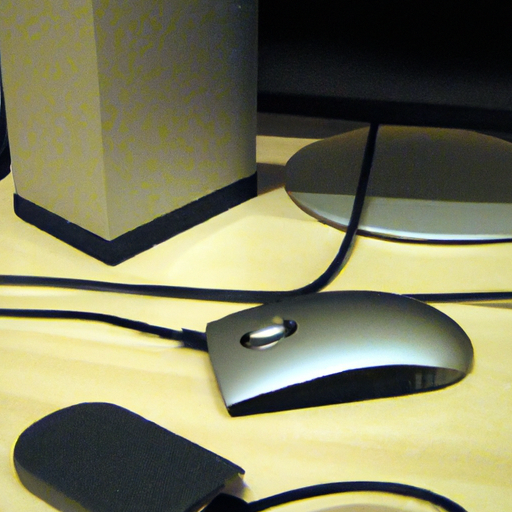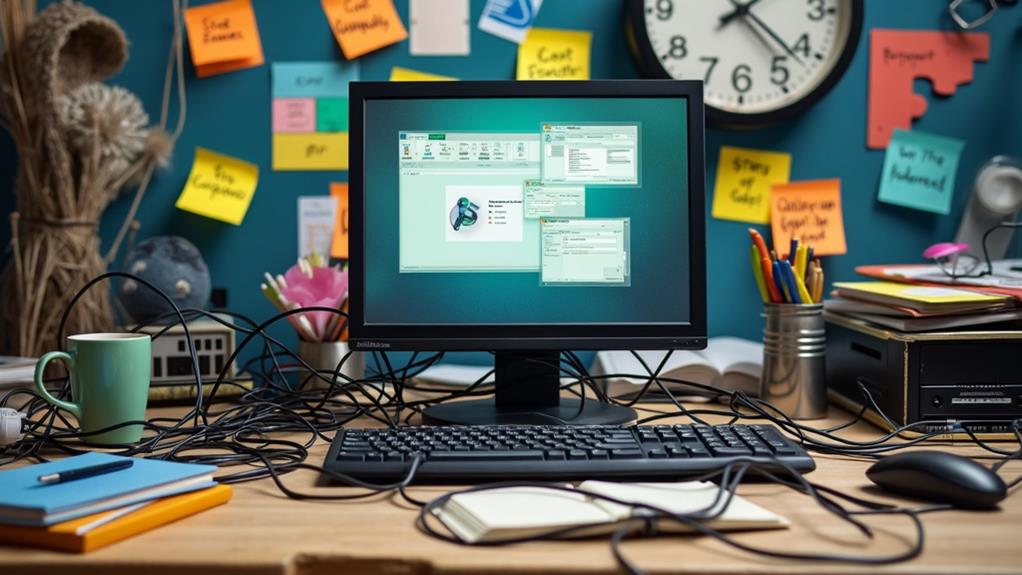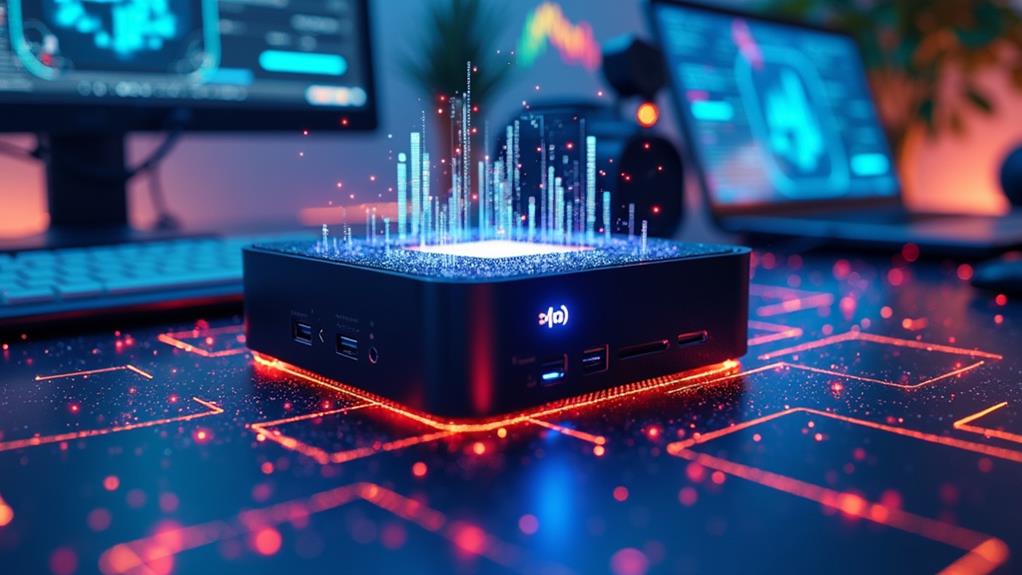



Are you curious about the various form factors in which mini PCs come? Look no further! This article will explore the exciting world of mini PCs and how they can fit into different form factors. Whether you’re looking for a small, sleek device for your home office or a compact powerhouse for gaming on the go, there is a mini PC out there to suit your needs. Let’s dive into the world of mini PCs and uncover the different form factors they offer.
Understanding Mini PCs
What is a Mini PC?
A mini PC, as the name suggests, is a small and compact computer that packs all the essential components of a traditional desktop or laptop into a much smaller form factor. These miniature computers are designed to be space-saving and highly portable, making them a popular choice for individuals who require a powerful computing solution in a smaller package.
Benefits of a Mini PC
There are several benefits to owning a mini PC. Firstly, their compact size allows for easy mobility. Whether you need to move your workstation from one room to another or travel frequently with your computer, a mini PC is lightweight and convenient to carry. Additionally, mini PCs consume less power compared to their larger counterparts, resulting in reduced energy costs. They also generate less heat, making them ideal for small spaces or areas with limited ventilation. Furthermore, mini PCs are often more affordable than traditional desktops, making them a cost-effective option for individuals with budget constraints.
Common uses of Mini PCs
Mini PCs are versatile and can be used for a variety of purposes. Many individuals use them as media centers, connecting them to their TVs to stream movies, shows, and other digital content. Their small size makes them ideal as home theater PCs, delivering a fantastic entertainment experience. Mini PCs are also commonly used in business settings, where space is limited, such as small offices or cubicles. They can serve as compact workstations for basic office tasks, such as word processing, spreadsheet management, and internet browsing. Additionally, mini PCs are popular among gamers for their portability and ability to handle less demanding games. They can also be used as educational devices in schools or as dedicated machines for specialized tasks like digital signage or kiosks. The possibilities are endless with these small yet powerful computers.
Form Factors of Mini PCs
What is a form factor?
In the context of mini PCs, a form factor refers to the physical design and size of the computer. It encompasses the dimensions, shape, layout, and arrangement of internal components, as well as the external connectors and ports available. Different form factors cater to various needs and use cases, providing users with options that suit their requirements and preferences.
Importance of form factor in Mini PCs
The form factor of a mini PC is crucial as it determines its physical size and compatibility with peripherals and accessories. It dictates the available expansion and customization options, as well as the cooling mechanisms and power requirements. Choosing the right form factor ensures that your mini PC fits seamlessly into your intended setup and meets your specific computing needs.
Different Types of Mini PC Form Factors
Traditional Mini PCs
traditional mini PCs are the most common form factor and resemble a smaller version of a traditional desktop tower. They typically feature a rectangular or square-shaped chassis that can be placed flat on a desk or mounted vertically if space is limited. This form factor allows for better heat dissipation and often offers more internal expansion options, such as additional storage or graphics cards.
Stick Mini PCs
Stick mini PCs, as the name suggests, are tiny computers that resemble USB sticks. They are usually small enough to fit in the palm of your hand and can be directly plugged into an HDMI port on a display device. Stick mini PCs are highly portable and convenient, offering a minimalist approach to computing. While they may lack some of the expansion options and power of traditional mini PCs, they are perfect for basic tasks, streaming media, and presentations.
Cube Mini PCs
Cube mini PCs, also known as small form factor (SFF) mini PCs, are slightly larger than stick mini PCs but still much smaller than traditional towers. They feature a cube-like design and are popular for their compactness and versatility. Cube mini PCs often offer more customization options and can support powerful hardware configurations suitable for gaming, media creation, or demanding workloads.
Barebones Mini PCs
Barebones mini PCs come with a basic set of components but require the user to provide additional components, such as memory, storage, and an operating system. They are essentially a barebones system that allows for customization and personalization according to the user’s preferences and requirements. These mini PCs are often chosen by enthusiasts or users with specific computing needs who want to have full control over the hardware and software.
Traditional Mini PCs and their Form Factors
Design and components
Traditional mini PCs feature a compact tower design that can be placed flat or upright. They usually have a similar layout to their larger desktop counterparts, with a motherboard, processor, memory, storage, and expansion slots enclosed within the chassis. They often offer more connectivity options, including USB ports, audio jacks, and multimedia card readers. The larger form factor allows for better heat dissipation, contributing to stable performance.
Suitable purposes
Traditional mini PCs are suitable for a wide range of purposes, including general computing tasks, office productivity, multimedia streaming, and light gaming. Their larger size and greater internal expansion options make them ideal for users who require additional storage, graphics capabilities, or other specialized hardware.
Advantages and disadvantages
The advantages of traditional mini PCs lie in their expandability and flexibility. Users have the ability to upgrade components and customize their system to meet their specific needs. This form factor also offers better airflow and cooling, leading to improved longevity and performance. However, the larger size may be a disadvantage for those with limited desk space or those wanting a more compact and portable solution. Traditional mini PCs may also consume more power compared to other form factors.
Stick Mini PCs and their Form Factors
Design and components
Stick mini PCs, as previously mentioned, resemble USB sticks. They are compact and lightweight, featuring a small chassis that houses the necessary components, including a processor, memory, storage, and wireless connectivity options. Due to their limited size, stick mini PCs often rely on passive cooling techniques or small fans for heat dissipation.
Suitable purposes
Stick mini PCs are perfect for individuals who prioritize portability and minimalistic setups. They are great for streaming media, web browsing, and basic office tasks. Their small form factor makes them easy to carry and connect directly to a TV, monitor, or projector, allowing for a convenient and clutter-free computing experience.
Advantages and disadvantages
The main advantage of stick mini PCs is their portability and simplicity. They are incredibly easy to set up and require minimal desk space. Stick mini PCs are perfect for travelers or individuals who frequently move their workstation. However, their small size often comes with limitations in terms of processing power and expansion options. They may not be suitable for resource-intensive tasks or advanced gaming, where higher performance hardware is required.
Cube Mini PCs and their Form Factors
Design and components
Cube mini PCs feature a cube-like design, as the name suggests. They are slightly larger than stick mini PCs but still significantly smaller than traditional towers. Cube mini PCs are known for their customizable nature, providing users with the ability to use high-performance processors, graphics cards, and other components. They often feature multiple expansion slots, allowing for the installation of various peripherals and storage devices.
Suitable purposes
Cube mini PCs are suitable for users who require more power and flexibility than what stick mini PCs or traditional mini PCs can offer. They are highly capable machines, making them ideal for gaming, content creation, and demanding workloads. Their compact size and customization options make them a popular choice among enthusiasts who want to build a sleek and powerful system.
Advantages and disadvantages
The advantages of cube mini PCs lie in their versatility and performance. They can accommodate high-end components and offer expandability to cater to individual needs. Despite their larger size compared to stick mini PCs, they are still quite portable and take up less space than traditional towers. However, they may be more expensive than other form factors and require some technical knowledge for assembly and customization.
Barebones Mini PCs and their Form Factors
Design and components
Barebones mini PCs come with the basic components required for operation, typically including a motherboard, processor, and power supply. However, they lack memory, storage, and an operating system, allowing users to choose components that suit their specific needs. This form factor often features a compact design with various connectivity options.
Suitable purposes
Barebones mini PCs are a great choice for users who want complete control over their mini PC’s specifications. They are favored by enthusiasts and professionals who require specific combinations of hardware or who have unique computing requirements. This form factor allows for customization and provides the flexibility to build a mini PC tailored to individual needs.
Advantages and disadvantages
The main advantage of barebones mini PCs is the ability to customize and personalize the system. Users have the freedom to choose components based on their preferences, budget, and performance requirements. Barebones mini PCs also offer a cost-effective solution for those who already have spare components or want to reuse existing hardware. However, the process of selecting and installing components may be more time-consuming and complex, requiring technical expertise.
Choosing the Right Form Factor for Your Needs
Factors to consider
When choosing the right form factor for your needs, it’s essential to consider several factors. Firstly, assess your computing requirements, including the type of tasks you’ll be performing, the software you’ll be using, and the performance you need. This will help determine the necessary processing power, storage capacity, and graphics capabilities. Additionally, think about your available space and mobility requirements. Consider whether you need a compact and portable solution or if you can allocate more desk or floor space for a larger form factor. Lastly, think about future expandability and whether you will require upgrade options down the line.
Making a suitable choice
To make a suitable choice, research and compare different form factors, considering their advantages and disadvantages, as well as their compatibility with your requirements. Read reviews and testimonials from users who have used the specific form factors you are considering. Additionally, consult with experts or knowledgeable individuals who can provide guidance based on their experience or expertise. Assessing your budget is crucial as different form factors come at varying price points. It’s important to find a balance between your requirements and your budget to make an informed decision.
Budget considerations
Budget considerations play a significant role in choosing the right form factor for your needs. Traditional mini PCs and cube mini PCs tend to be more expensive due to their larger size and higher performance capabilities. Stick mini PCs and barebones mini PCs may be more budget-friendly options, although stick mini PCs may have limitations in terms of expandability and power. Plan your budget accordingly, considering not only the initial cost of the mini PC but also any additional components or accessories that may be required, such as storage, memory, and peripherals.
How Form Factors Affect Mini PC Performance
Influence of physical size on performance
The physical size of a mini PC, as determined by its form factor, can have an impact on its performance. Smaller form factors like stick mini PCs may have limitations in terms of cooling and airflow, which can affect the overall performance and longevity of the system. Larger form factors, such as traditional mini PCs and cube mini PCs, often have better cooling mechanisms, allowing the components to run at optimal temperatures and maintain stable performance.
Correlation between form factor and power
There is generally a correlation between form factor and power in mini PCs. Traditional and cube mini PCs tend to offer more powerful hardware options in terms of processors, graphics cards, and other components. Their larger size allows for better thermal management, which in turn allows for higher power components to be used. Stick mini PCs, on the other hand, prioritize portability and compactness over raw power, making them more suitable for basic tasks and media streaming.
Thermal management and form factor
Thermal management is an essential aspect of mini PC performance, and it is influenced by the form factor. Smaller form factors like stick mini PCs often rely on passive cooling or small fans due to space limitations, which may impact the cooling efficiency. Larger form factors, such as traditional and cube mini PCs, typically feature more robust cooling solutions, including fans and heat sinks, allowing for better heat dissipation and cooler operating temperatures. Efficient thermal management results in improved system stability, longevity, and sustained performance.
Future Trends in Mini PC Form Factors
Predicted developments
As technology advances and consumer demands evolve, we can anticipate several future trends in mini PC form factors. One potential development is the further miniaturization of mini PCs, allowing for even smaller and more portable devices. We may also see advancements in cooling technologies, enabling more powerful components to be used in smaller form factors without compromising on performance or heat dissipation. Additionally, there may be increased integration of wireless connectivity options, further reducing the need for cables and enhancing the overall portability and convenience of mini PCs.
How evolving technology might change form factors
As technology continues to evolve, it is possible that we may witness more innovative and unconventional form factors for mini PCs. Advancements in flexible and foldable display technology, for example, could lead to mini PCs that can be folded or transformed into different shapes for varying use cases. Furthermore, developments in modular and interchangeable components may allow for greater customization and upgradability, regardless of the chosen form factor. It will be exciting to see how evolving technology influences the design and functionality of mini PCs in the future.
Impact of consumer demands on form factors
Consumer demands play a crucial role in shaping the future of mini PC form factors. As individuals increasingly prioritize portability, convenience, and space-saving solutions, manufacturers are likely to continue creating smaller and more compact mini PCs. However, there will always be a need for more powerful and versatile systems, leading to the coexistence of various form factors catering to different user requirements. Manufacturers will continue to listen to consumer feedback and strive to meet the ever-changing demands of the market, ultimately influencing the future direction of mini PC form factors.
In conclusion, mini PCs come in various form factors, each catering to different needs and preferences. Traditional, stick, cube, and barebones mini PCs offer users a range of choices in terms of size, design, expandability, and power. It is crucial to consider your computing requirements, available space, and budget when selecting the right form factor for your needs. The form factor of a mini PC can impact its performance, thermal management, and overall functionality. As technology advances and consumer demands evolve, we can anticipate further developments in mini PC form factors, enabling even smaller, more powerful, and innovative devices in the future. Whether you prioritize portability, customization, or high-performance capabilities, there is a mini PC form factor that will perfectly suit your needs and enhance your computing experience.
Disclosure: As an Amazon Associate, I earn from qualifying purchases.







